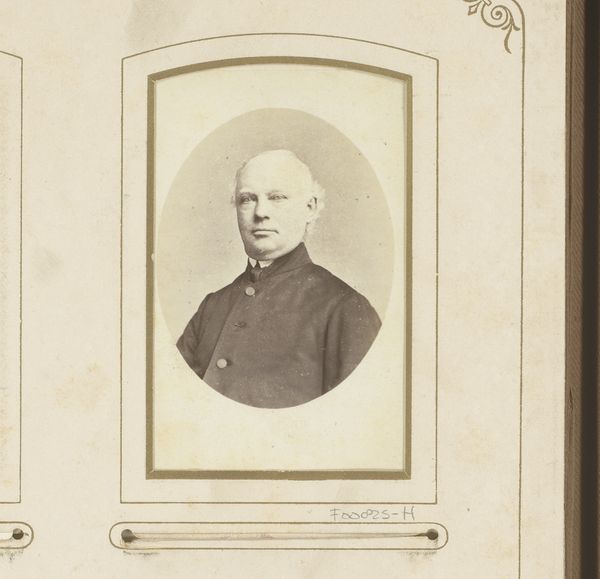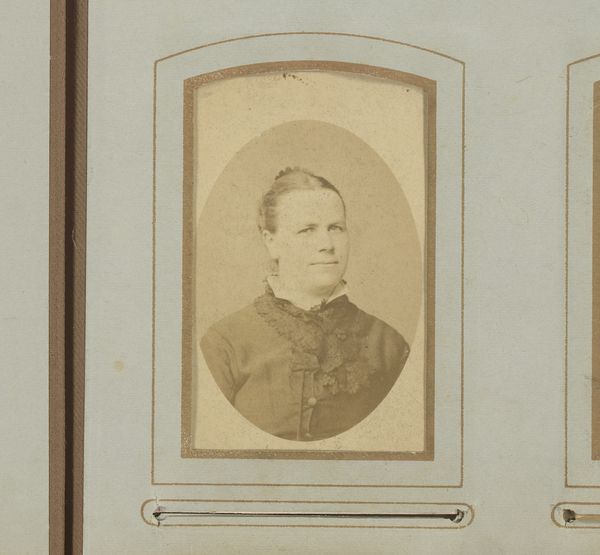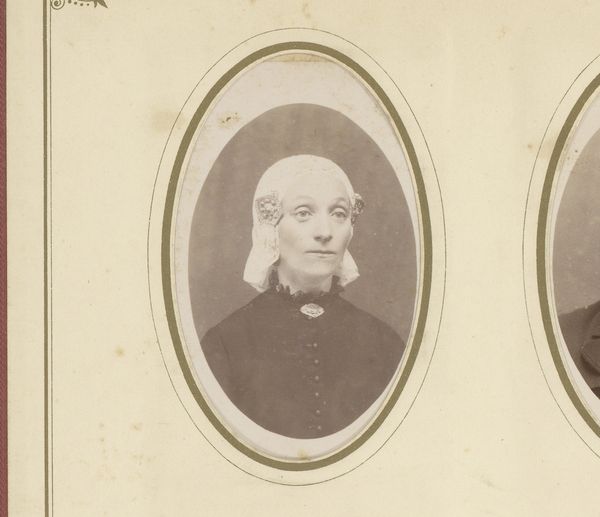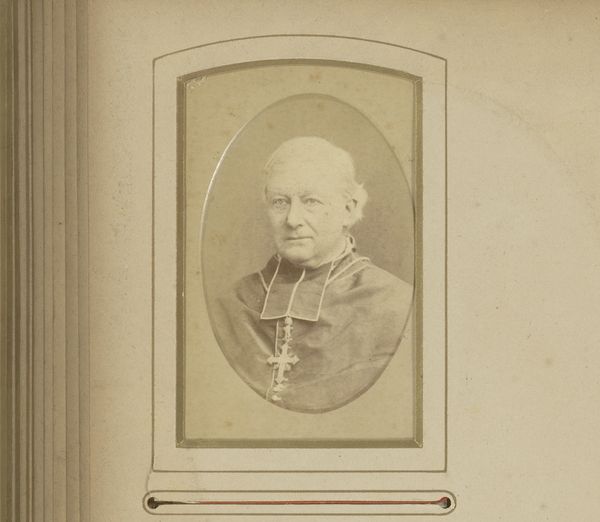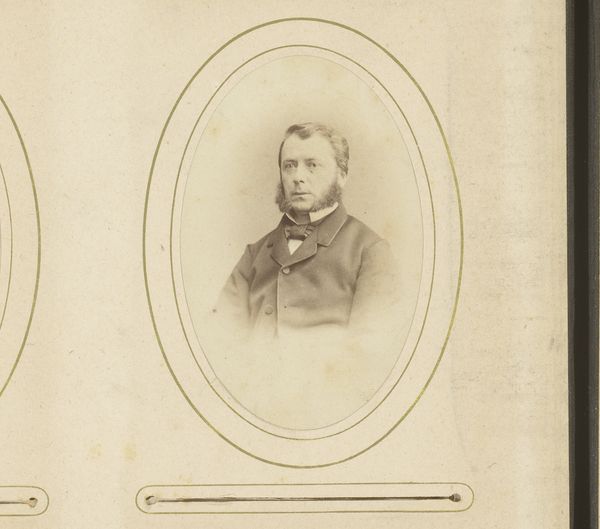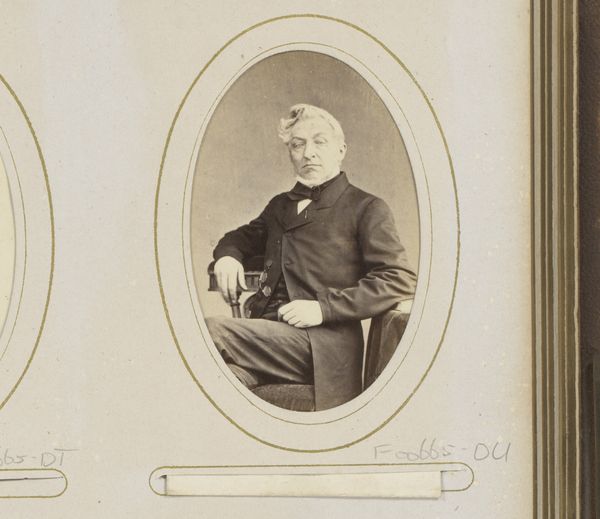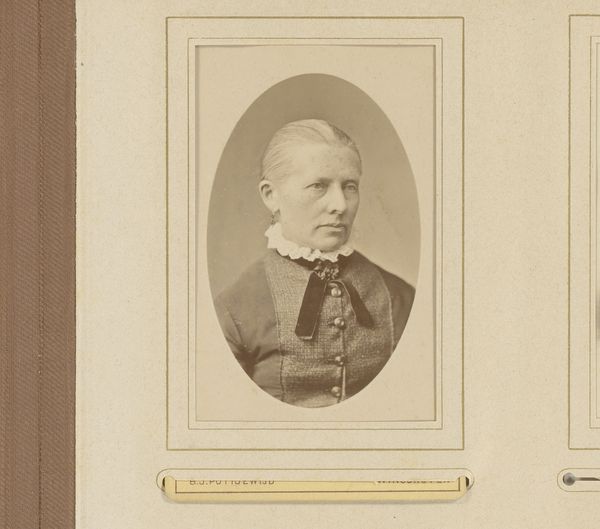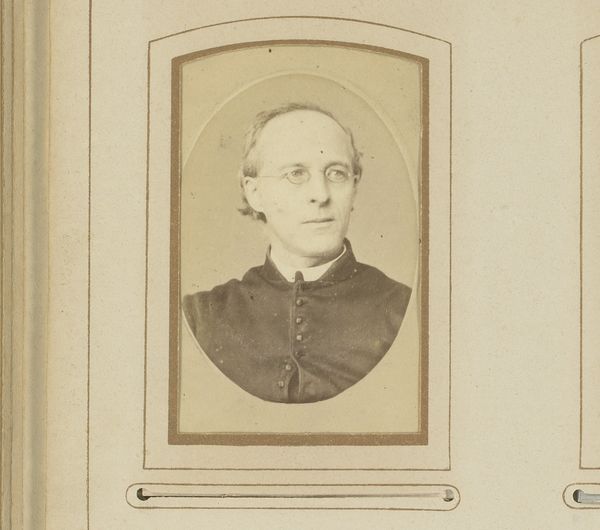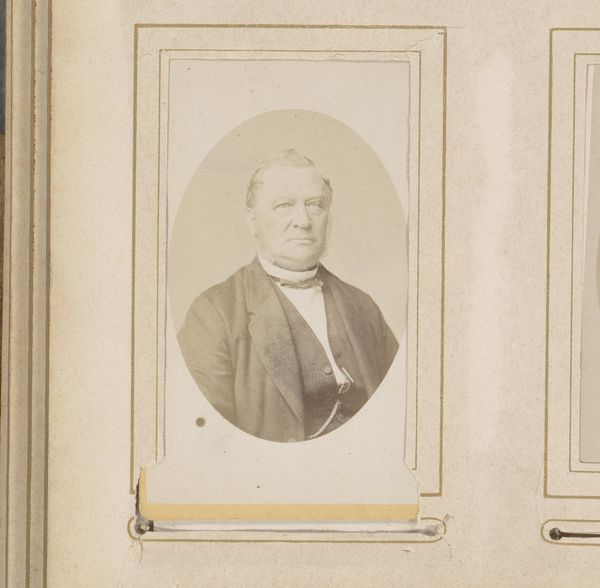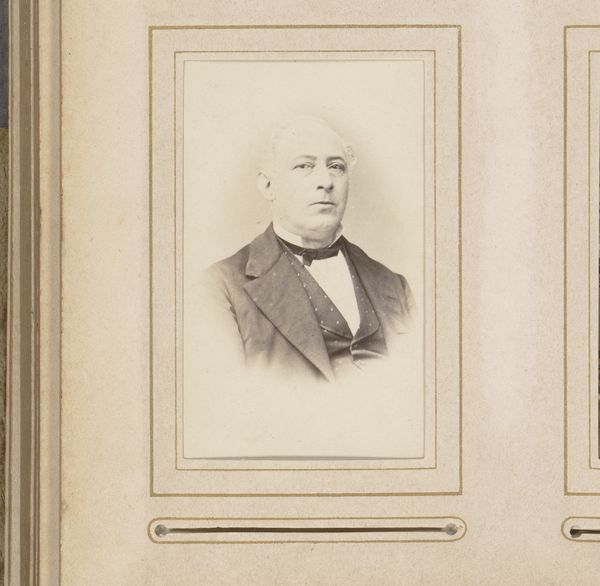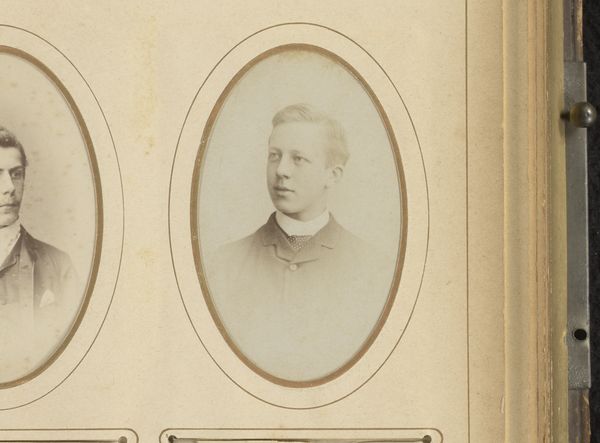
photography, albumen-print
#
beige
#
portrait
#
aged paper
#
toned paper
#
earth tone
#
16_19th-century
#
yellowing background
#
parchment
#
photography
#
brown and beige
#
yellow element
#
warm-toned
#
golden font
#
albumen-print
#
realism
Dimensions: height 85 mm, width 51 mm
Copyright: Rijks Museum: Open Domain
Curator: Let’s turn our attention to a photographic portrait from around 1865, identified as "Portret van een man, aangeduid als Curi de Pastizete." It's an albumen print, a very popular method at the time. Editor: It has such an intimate, aged feel, doesn't it? The warm-toned paper and sepia tones really emphasize a sense of history. I'm struck by the delicate quality of the material itself, feels almost fragile. Curator: Absolutely. Albumen prints like this one, though sharp in detail originally, are inherently susceptible to fading and discoloration over time. That aged quality becomes part of its history. And considering its historical context, in the 1860s photography was just beginning to be widespread for portraiture among the middle classes. It allowed more individuals than ever before to possess and share their own image, or those of their loved ones. Editor: That shift in accessibility must have had a real impact on how people thought about image making and their place in society. And just looking at him - his collar is so meticulously neat; his expression so carefully neutral... It speaks to the formal nature of these early portraits, which contrasts quite starkly with the ubiquity of photographic images today. Curator: Precisely. Posed photography became an important marker of social status. The attire tells a story too - his clothing would reflect the status of the clergy in local society. The name "Curi de Pastizete" suggests his local community held him in esteem. Editor: Thinking about it, there’s a huge amount of labor in play that isn’t immediately obvious when viewing such a restrained image. The laying of the albumen, the careful timing and preparation. These photographs are as much about craft as representation. Curator: You’re absolutely right. The production process, and how studios made the prints available at reasonable prices. This played a part in how images were used and circulated throughout society. Editor: Looking at it now, it's a deceptively simple image that is rich in social and material complexities. It shows not just the clergyman, but a certain time period as well as the emerging place of photography in it. Curator: Agreed, and those material considerations - the albumen print and its ageing - are so interwoven with how the work has come to signify that past now.
Comments
No comments
Be the first to comment and join the conversation on the ultimate creative platform.
